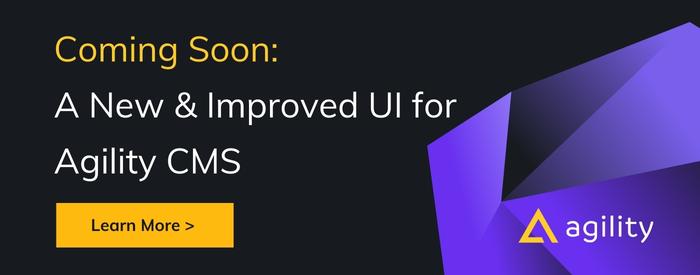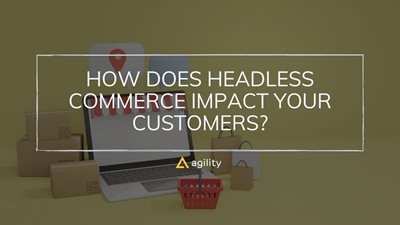How IT can Address and Overcome the Customer Experience Revolution

It's the year 2008. The term "customer satisfaction" starts gaining popularity as a customer-focused keyword. Customer experience starts gaining popularity alongside. Till 2010, both co-exist alongside.
People couldn't make up their minds as to if both the terms meant different things or not. In 2010 "customer experience" went up like a rocket, while "customer satisfaction" took a deep dive.
It has, since then, become the backbone of functional customer support teams across industries. Fast forward to 2022, customer experience has become the most significant factor in defining a support team's success.
And rightfully so.
The customer experience (CX) includes multiple support elements and reflects the entire ecosystem. It encompasses everything from when the customer first interacts with your brand to the end when they make a purchase, or even further (for post-sales queries.)
CX is much more holistic and covers how customers interact with marketing, sales, support teams, or any other customer-facing aspect of your brand. Customer experience has more to do with how happy a customer feels with your offerings.
Improving your CX can have a considerable impact on your bottom-line profits. Don't believe us?
Did you know?
- Even a moderate increase in your customer experience can generate an average revenue increase of $823 million over three years for a brand with $1 billion in annual revenues.
- According to Harvard Business Review, investing in CX can reduce operational costs. Unhappy customers are expensive, after all.
But many brands still struggle with implementing CX within their organization and making their support customer-centric. So how do you overcome traditional issues with customer experience while still moving toward the CX excellence direction?
This article will explore the top issues organizations get stuck into and how to overcome them.
Customer Experience Revolution: The COVID Factor
With the onset of a global pandemic, the past two years turned all the rules for CX upside down. Even the best-prepared brands were caught off-guard and couldn't remain agile. The pandemic pushed companies to work offline and serve their customers and internal employees offline.
The outcome?
Rise of a next-gen customer experience that connects the real and digital world!
CX bolsters a brand's ability to maximize revenue and build lifelong relationships with consumers by communicating what they care about and in a voice that resonates. Here are some key takeaways illustrating how companies navigated the challenges of the pandemic and how marketers can apply those strategies to future campaigns.
Challenges in Customer Experience and How to Overcome them using IT Solutions
1. Challenge: Redundant Work for Support Teams
All of us have been a part of monotonous redundant tasks that never seem to end. There's no way to avoid it! Support teams face burnout about redundant work that never seems to end. Besides, redundant work keeps the support teams away from doing the actual work that matters.
Imagine your teams being busy all the time assigning support tickets to your customers, so much so that they don't get enough time to solve these tickets.
What can you do to prevent this situation?
Solution: Automate Wherever Possible
Automating your processes or at least small parts of your workflows will help you maintain a successful support operation that revolutionizes the industry. Analyze your support and look for the touchpoints where you can apply automation.
Analyze your customer interactions—see where human interaction is necessary and what areas you can improve using automation. Here are some suggestions where you can apply automation:
Common Examples of CX Automation
- Automating query registration
- Routing the customers to the correct department
- Sorting customer queries and assigning them to the agents
- AI chatbots for websites to engage with customers during offline hours
- Self-checkout options (for physical retail stores)
- Self-service portals to answer common customer queries
2. Challenge: Lack of Multi-Channel Communication
Communication channels play a huge role in connecting customers with their preferred brands for various forms of engagement and interactions.
Besides, we live in an era where customers start their buyer journey from one device, pause their journey, and pick up from where they left off through an entirely different device. If your brand does not support multi-channel capabilities, providing this experience won't be possible.
Solution: Omnichannel Communication Approach
Businesses that have mastered the art of communication across various channels can provide a seamless customer experience. Brands achieve more than 91% retention when they implement an omnichannel strategy.
How to select the correct communication channels:
- Study your customer expectations thoroughly
- Find out where your customers are at
- Take your budget into account and see what all channels can you accommodate
Headless CMS to Streamline Omnichannel CX
Along with how to sell online, also think of how to improve the user experience for selling products online.
Build your website using a headless CMS system. It generally works through the back end and houses all your content in a cloud-based body.
Headless CMS manages the content and not the presentation. The end users receive the content through their preferred method or channel automatically.
It is particularly crucial for omnichannel sales with multiple channels for customer contact.
With headless CMS, end users can access your content across various channels, applications, or devices.
Pro Tip:
Do not leave social media channels out of your omnichannel strategy. We live in an era where Twitter is known as the place where customers complain, publicly tagging the brand!
Besides, Facebook and Instagram are major touch points for customers to communicate with brands and directly access their customer support service without waiting too long. How quickly do customers expect a response from you? Here look at this tweet.
It might be the worst customer service response time in the history of customer support. You don't want this to happen to your brand, do you?
3. Challenge: Lack of Self-help Options
Customer self-service enables people to engage with your business without the need to talk with an agent. Besides, it is available to users 24*7 through the device of your choice. Studies state that online FAQs are one of the most frequently used self-care service options.
It is also true for the B2-B industry. A McKinsey survey of B2B executives found that lack of speed in interactions with their suppliers was a top pain point.
It does not mean that you won't need live agents for support. But, you don't need live agents for every transaction. Customers do not prefer undergoing a sometimes-lengthy process of contacting support teams, explaining their situation, and waiting for someone to solve their problems. Modern-day customers like to solve simple issues themselves. Look at these stats:
Almost 89% of U.S. customers expect a brand to offer a self-help portal.
The driving force behind this?
Convenience!
Solution: Comprehensive Knowledge Base
The simplest solution would be to provide self-service solutions that your customers want. Customer self-service can bring enormous advantages to you as well.
Think of all the time your support agents will save by avoiding redundant queries. Support reps can focus this time and effort on personalized experiences for customers.
Pro Tip:
Once you've established your self-help center, link your knowledge base to your chatbots or live chat interface. This way, customers can hop on to your website and type in their queries in the automated chatbots. The chatbots can then redirect them to the relevant answers. It saves time and effort for your customers and sets the CX bar high.
4. Challenge: Availability Beyond Business Hours
We all know that the round-the-clock availability of a brand is essential in this day and age. There are no two ways about it.
But, many startups and SMBs cannot afford to provide 24*7 customer support. Self-help options can prove to be your savior in such a scenario. But, that too will be limited to simple queries. What about complex queries?
Solution: Leverage AI-enabled Chatbots
Leveraging AI-enabled chatbots is the best way to overcome this challenge. Chatbots can hold your conversations during offline hours until your support agents take over. They can gather the data and help the customer solve their queries if they are simple enough.
5. Challenge: Data Mismanagement
Customer data insights mean a deep dive into customers' needs. It is especially true for customer support teams as they can leverage data to serve better and personalized experiences.
Alas, many brands struggle with organizing their data silos. A survey states that 95% of businesses need to step up their data management game. Data mismanagement also involves data access and privacy failures.
How will you improve something if you do not have access to the latest version of it? Lack of data is the most limiting thing that teams experience while innovating CX.
Also, without accurate data, how will you measure if your support is getting better or not?
57% of executives don't know what to measure to indicate that their customer experience strategy is performing well.
Besides, data dispersed all over the place is as good as no data in the first place. Having consolidated data in one place helps you better understand what is vital and what is not.
Solution: Unified Data Accessibility
Unified data silos enable cross-functional teams to collaborate. Data accessibility tools, integrations, and CRMs are a blessing to the customer support industry. See which one you will need to leverage. To manage your data accurately, you'll need:
- A place where you can store all your data (CRMs)
- Tools to integrate your software
- Dashboard to view and analyze data—all from one place
- A streamlined system to share and curb access
Besides, you can also leverage digital asset management systems to manage content for your entire organization across multiple channels. They can bring harmony to your team by storing, sharing, and organizing all digital content in a secure and centralized location.
6. Challenge: Loopholes in UI Reduce User Experience
Let's start with some stats:
- 38% of people will leave if the content or layout of a website is unattractive.
- 47% of people expect a webpage to load within 2-3 seconds.
- 95% of users think that good UX is the most crucial part of a website.
- 94% of people will close a website if the web design is not compelling.
If it is not any clearer, let me write it for you—unappealing design, complicated navigation structure, and slow loading time kills your user experience.
UX is a considerable part of the customer experience if the survival of your business depends on website visitors.
Solution: Creating Superior UI to Create Better Customer Experience
In the era where every brand is upping their UI game, you should jump on the UI bandwagon. With so many alternatives available for users, your UI/UX designs will help you grab customer attention.
Make UX and UI an integral part of your business. Only thorough research and planning will help you design efficient UI/UX. Work closely with web development experts and ensure that you consider these things while enhancing your website/app/software's interface:
- Consistency in experience
- Ease of use for the target audience
- Brand building
- User retention
7. Challenge: Lack of Knowledge of Customer Expectations
A lack of customer insights is the biggest challenge to a successful customer experience strategy. Data-driven CX strategies are crucial for the success of a business. Many companies cannot identify customers on their websites, let alone find out what they expect from the brand.
For example, your brand is gaining popularity beyond your targeted demographics, say from another country. You're receiving website/product views and queries from outside the country. But you don't ship internationally. If you are analyzing your website data continuously, you would quickly partner with international air freight service providers and make international shipping available ASAP. Lucrative right?
Now imagine what would happen if you did not analyze your website data regularly. You would never find out that you have a potential international audience. That's just lost opportunity, and it's bad enough.
Solution: Analytics-led Experience
According to a study, 54% of respondents think that lack of customer insights is one of the biggest challenges that prevents customers from serving a better brand experience. 57% of respondents consider lack of skilled talent to be their primary challenge in delivering better CX.
Designing great CX is getting simple with the rise of predictive analytics. It takes account of all the components of customer experience—including data from direct and indirect feedback.
Direct feedback data includes:
- Net promoter score (NPS)
- Customer satisfaction (CSAT)
- Customer effort score (CES)
- Voice of the customer (VOC)
- Social media feedback or responses
Other Metrics and Analytics
You can often measure these from your support processes and conclude customer expectations:
- Average handle time (AHT)
- Customer lifetime value
- Average spend
- Customer churn rate
- Customer renewal rate
- Voice and chat metadata, transcripts, and analysis
- Social listening
- Customer review monitoring
8. Challenge: Lack of Personalized Experience
Research says, 63% of consumers expect personalization and think that it is a part of standard service. Not only this, but customers feel more seen and heard when brands make exceptional attempts to personalize services to meet their needs.
38% of buyers say they like it when brands send recommendations based on their previous purchases. On the other hand, it frustrates customers when brands send suggestions for something they just purchased.
When it comes to personalization, another shocking statistic from the same research states that:
- 57% of marketers think they do not struggle to meet customer expectations.
- 73% of customers, however, believe the opposite to be true.
Solution: Serve Data-Backed Experiences
Harness transactional data from your CRM software and understand the crux of personalization. For existing customers, use their buying history to design better website experiences that recognize the customer's previous purchases and offer recommendations based on these.
For example, see this cart abandonment email reminding customers about what they left in their shopping carts.
You can also use your transactional data to segment your audience and design a personalized customer experience. Focus on behavioural patterns and demographics that show up among purchase history and use these insights to create targeted advertising for the right audience segments.
Final Thoughts
Customer experience is full of new and exciting things. But, with new things come, new problems of being able to keep up. Keep your teams on top of data and make data-driven decisions. We have listed the eight most common challenges that the customer experience revolution brings. Hope the solutions to these challenges help you lift your customer experience and retention rates.
About the Author
Oliver Thyra is the head SaaS copywriter and content strategist at Your Marketing Digest. His intense passion for marketing and his engineering background in software engineering has made him a guy who understands how to sell software subscriptions with words. In his free time, Oliver enjoys quality time with his pets (he has got 4 golden retrievers!).




